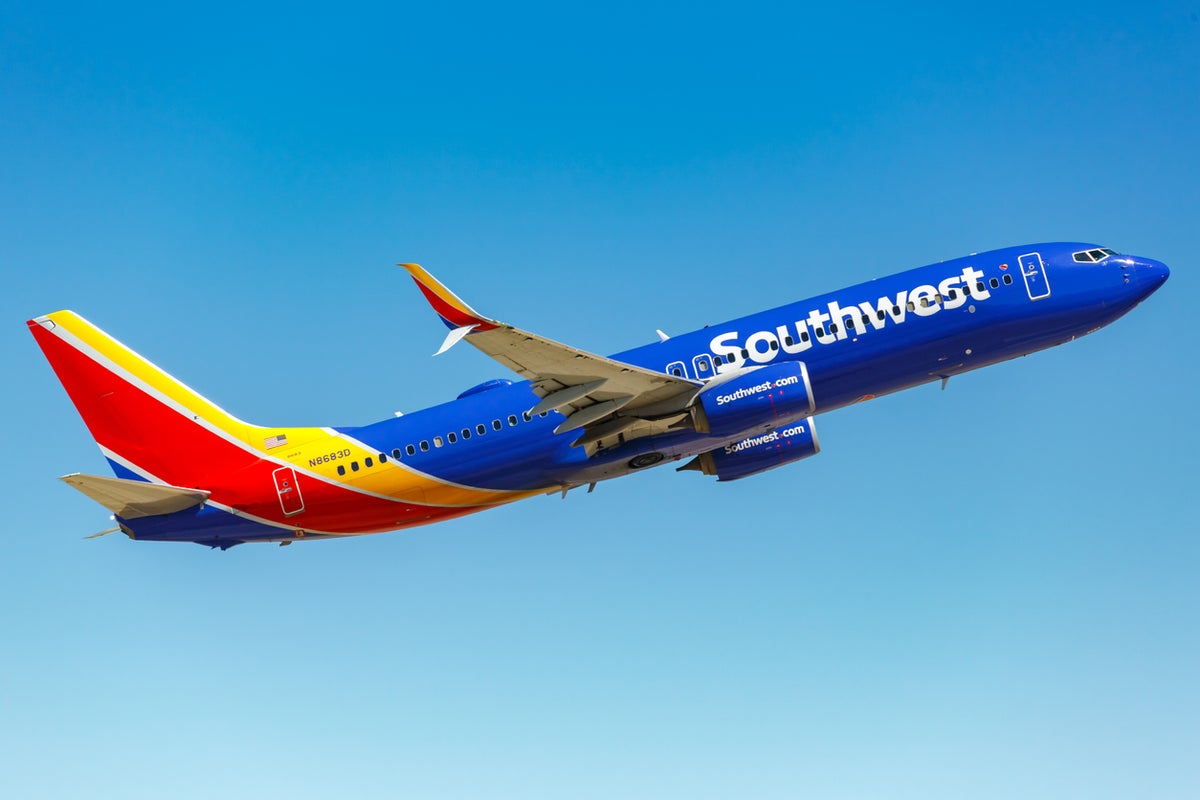
Commercial airlines experienced at least 46 close-call incidents last month, according to Federal Aviation Administration (FAA) safety reports reviewed by the New York Times.
Although there have been no major US plane crashes in more than 10 years, the outlet reported, potentially dangerous encounters are happening more frequently than previously known. The report arrived shortly after a private jet came within 100 feet of crashing into a Southwest Airlines plane in San Diego.
Commercial airlines-involved close calls have been happening multiple times a week, and include every US airline and are occurring across the country, the Times reported. The publication provided haunting examples.
On 2 July, a Southwest Airlines pilot didn’t land at its designated runway at Louis Armstrong New Orleans International Airport due to a Delta Air Lines plane nearing take off on the same runway; the move to abort the landing prevented what could have been a catastrophic collision.
Just over a week later, an American Airlines jet was moving down a San Francisco runway at more than 160 miles per hour when it barely dodged a Frontier Airlines plane – the nose of the plane nearly crept into the path of the American Airlines aircraft. Mere minutes later, a German plane almost hit the Frontier plane too; the FAA referred to the near misses as “skin to skin,” according to records obtained by the Times.
The publication alluded to other chilling close encounters throughout its report.
On top of analysing the FAA records, the publication investigated a database maintained by NASA. This database holds confidential safety reports filed voluntarily by pilots and air traffic controllers, which revealed that in the most recent 12-month period of available data, there were roughly 300 accounts of collisions that almost occurred involving commercial airlines.
The quantity of near misses has more than doubled over the past decade, the outlet noted; however, it was unclear whether the increase was due to declining safety conditions or more voluntary reporting.
The Times found entries in the database by aviation officials describing their fears about aviation safety after experiencing a close call.
“Honestly, this stuff scares the crap out of me,” a longtime airline captain reported to NASA in November, after an air traffic controller told the pilot it was safe to land on what looked like “a collision course” with another passenger plane.
“This has really opened my eyes to how the next aviation accident may play out,” another pilot told NASA after a close call on a runway in January.
“Is it going to take people dying for something to move forward?” a controller wrote the same month after narrowly avoiding a midair collision.
“The U.S. aviation system is the safest in the world,” the FAA said in response to the Times report, “but one close call is one too many.”
The FAA said it has “virtually eliminated the risk of fatalities aboard U.S. commercial airlines.” It continued, “Since 2009, U.S. carriers have transported more than the world’s population with no fatal crashes.”
Now, the agency said it is “pursuing a goal of zero serious close calls.”The close calls that happened at or near airports were often the result of human error—the Times reported—calling air traffic controllers’ errors a “major factor.”
The lack of air traffic controllers has already been widely reported in the context of massive flight delays and cancellations, especially post-pandemic lockdowns; to combat this shortage, the agency said it has hired 1,500 controllers for 2023. In March, the Transportation Department requested 117 million in funding for air traffic controller hiring.
The Times unveiled that as of May 2023, of the 313 air traffic facilities across the country, only three met staff targets set by the FAA and the union representing air traffic controllers; many air traffic controllers have to work six days per week, a tiring routine that could potentially hinder their abilities physically and mentally, the outlet added.
Controllers weighed in on the staffing shortage in reports to the FAA reviewed by the Times.
“The staffing shortage is beyond unsustainable. It has now moved into a phase of JUST PLAIN DANGEROUS,” one controller wrote to the FAA last year.
“Controllers are making mistakes left and right. Fatigue is extreme,” the controller continued. “The margin for safety has eroded tenfold. Morale is rock bottom. I catch myself taking risks and shortcuts I normally would never take.” The controller wrote ominously, “It is only a matter of time before something catastrophic happens.”
On top of the staffing shortage, most US airports have not installed warning systems to aid in preventing runway collisions, the Times noted. In 2017, the National Transportation Safety Board told the FAA to install more detection systems, but according to the publication, in the years since, the agency has not installed a single new surface detection system.
A spokesperson for the FAA said the agency didn’t have sufficient funding for the new systems, and was instead was looking for more affordable options.
The Independent has reached out to the FAA for comment.







